The trade publication Automotive News reports that new car buyers are “losing patience” with the dearth of new car inventory caused by the dearth of new “chips” needed to run the systems all new cars are afflicted with.
This problem could be solved at a stroke – by building cars again, rather than very pricey (and very disposable) mobile phones.
Cars don’t need “chips” – to be cars. They have them. This is an important distinction. They have “chips” – the Lego Blocks of computer-controlled cars – so as to control the car’s systems with computers, which now spider-web the entirety of the car’s systems.
The very first “chips” were simple – and local. They were transistorized modules that began to replace mechanical ignition contact points within the distributor that timed and transmitted the spark that fired the air-fuel mixture within the engine’s cylinders.
This made ignition systems more reliable and greatly reduced the need for regular maintenance, since it was no longer necessary to regularly check and adjust the clearance between the contact points – or replace the points when they wore beyond specification. Some people lamented the passing of points into the history books (along with road draft tubes) but, on balance, the changeover was a clear boon for most people.
The next step was computer-controlled fuel delivery, first of carburetors – this was in the late 1970s and early 1980s – and then by getting rid of carburetors altogether in the late ’80s and replacing them with electronic fuel injection. This entailed electronic control of the fuel injection and ignition system, which had to work together to work effectively.
Computer-controlled engines had arrived.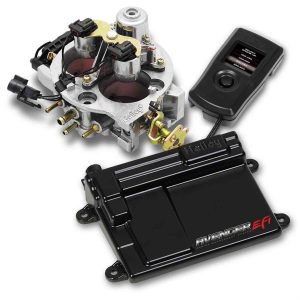
At first, this was also – overall – a boon. On the one hand, real-time fine-tuning of the engine without having to actually work on the engine was now possible, which (once again) also greatly reduced the need for regular maintenance. The annual spring and fall tune-ups that car owners had become accustomed to since the days of the Model T disappeared.
In favor of the 100,000 mile tune-up.
Oil change intervals roughly doubled, because engine oil was no longer turned into engine solvent after as little as 3,000 miles – via the gasoline that seeped into the crankcase from the carburetor up top, which was no longer up top.
Engine longevity increased, several-fold.
Computer-controlled electronic fuel injection is among the main explanatory reasons for the doubled – the tripled – useful service life of the average late-model car engine, which now routinely runs like new at 75,000 miles and can usually be counted on to run for another 150,000 before it reaches the end of the road.
This has saved the average car buyer many thousands of dollars – assuming he is savvy enough not to needlessly buy another new car every 75,000 miles.
It has also helped the car manufacturers cope with the government, which has been trying to kill cars via regulations for the past 50-plus years. It would have been impossible to “comply” – say it like the Borg, from Star Trek – with the government’s ukases and fatwas, especially those regarding mandatory-minimum MPGs as well as emissions – without computer-controlled electronic fuel injection and ignition systems.
So far, so good. Because so far, win-win. The government got what it demanded (i.e., new cars that “complied” with the various ukases and fatwas) while the car buyer got more than he wanted (i.e., a new car that was more reliable, lower-maintenance and longer-lived but which was still fundamentally a car and not yet a computer that moved).
But kinetic energy has a force all its own and once it was realized that computers could control engines, it became inevitable they would be used to control everything.
Transmissions received Borg-like electronic implants and became part of the . . . collective. Then the car’s air conditioning and heat, which became computer-controlled climate control. Mechanical interfaces such as between the gear selector and the transmission and the gas pedal and the engine’s throttle were replaced with sensors and modules, feeding data through a multiplexed network of wiring to hive-mind computers, which needed chips to make them sentient. This extends today to the extent of controlling things such as power windows and locks, via what are styled body control modules.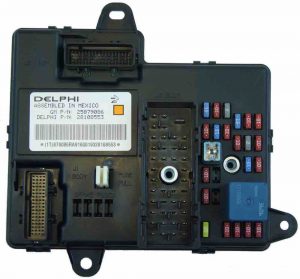
There are also LCD gauge and “infotainment” clusters and tap and swipe “inputs” in lieu of just as functional mechanical gauges and knobs and buttons, the latter not needing chips to work.
But the former do.
The problem, now, is that chips are embedded in the very fabric of all new cars. It is no longer just the engine – or even just the drivetrain. It is everything. The entirety of a modern car is an interconnected system, the parts a part of a whole and inseparable from it.
They have been assimilated.
The Borgification of cars has become so complete that many parts have to be “flashed” or otherwise hive-minded to the collective (at the dealer) before they will even work. Including even headlights, which are also now controlled by modules and “chips.”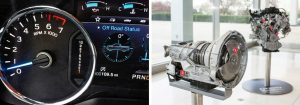
This is no longer a win-win. The functional improvements are trivial. Can you tell the difference in cold-start performance and throttle response between an early ’90s-era car with a throttle body fuel injection system and a new car with a direct-injection system?
Does a ten speed automatic with three overdrives confer a functional advantage over a four-speed automatic with one overdrive?
Does your power window raise or lower better because its operations are governed by a body control module rather than a mechanical switch and wires?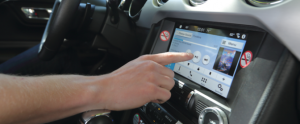
Is it easier to adjust your car’s heater or air conditioner by sliding a lever and turning knobs – or by tapping and swiping a flat screen display?
The point of diminishing returns hasn’t just been reached – we passed it, about fifteen years ago.
This is what you might call the Curse of Apotheosis. Cars reached a point of perfection, as cars, in the early-mid-2000s or at least as close to perfection as anything crafted by the hand of man can become. Almost maintenance-free. Almost glitch-free. Longer-lived (and by far) than any cars made before. Yet still affordable and – to a great extent- fixable.
But what then?
How do you market and sell new cars, post-Apotheosis? Why, you add more “technology.” Especially electronic technology. Enter the flatscreen, the wirelessly disconnected everything – and the need for all those chips to make it work.
And so, here we are. With new vehicles that have become mobile phones that are even more dependent on chips, made in (cue Orange Man voice) China, which doesn’t like America much.
All for the sake of having a computer control the operation of your power windows and screen to tap and swipe rather than a button to push or a knob to turn.
. . .
Got a question about cars, Libertarian politics – or anything else? Click on the “ask Eric” link and send ’em in! Or email me at EPeters952@yahoo.com if the @!** “ask Eric” button doesn’t work!
If you like what you’ve found here please consider supporting EPautos.
We depend on you to keep the wheels turning!
Our donate button is here.
If you prefer not to use PayPal, our mailing address is:
EPautos
721 Hummingbird Lane SE
Copper Hill, VA 24079
PS: Get an EPautos magnet or sticker or coaster in return for a $20 or more one-time donation or a $10 or more monthly recurring donation. (Please be sure to tell us you want a magnet or sticker or coaster – and also, provide an address, so we know where to mail the thing!)
My eBook about car buying (new and used) is also available for your favorite price – free! Click here. If that fails, email me at EPeters952@yahoo.com and I will send you a copy directly!




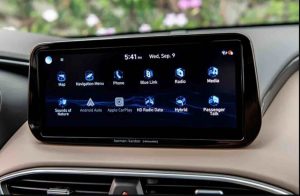








I read that the average car has somewhere between 60 and 130 computer chips. LOL
As in music, there is a resurgence of vinyl, could cars end up being simplified due to these problems?
Maybe a few models sold as cheaper alternatives at least?
RE: vinyl
I recall watching a comedy type zombie movie awhile back, one of the half-zombies listening to a vinyl record made a comment along the lines of, “It sounds alive” I think it was, as apposed to CD’s.
That thought has stuck with me ever since. There does seem to be a kind of deadness to digital audio.
I’ve since noticed a similar characteristic between black & white films vs. color, and even older color films vs. newer ones. Idk.
It’s fairly well known that color films each have their own unique look. Some are so well known and culturally important musicians write songs about them, like, oh, I dunno Kodachrome.
The goal is pretty obvious. It is to have the car control you for someone else’s benefit. Thank god for entropy, also known as Murphy’s law and unintended consequences.
I was thinking about digital computer controlled devices this morning before the Sun was up after I plugged an old light into an extension cord. I had left the switch to the light in the ON position, thus when I plugged it back in, it-came-on, just like I left it the last time I used it, which is the opposite of every digital piece of crap there is, they All have to be turned back ON whenever you power them back up! And, settings usually have to be adjusted, the opposite of manual dials and such. Just an annoyance I’ve noticed more and more, lately.
Kindof like how computers were ‘supposed to’ usher in the paperless office/etc… yet more boxes of printer paper than ever is around, it seems to me, digital/computer results in less control over things, not more. YMMV, I suppose.
The real shitty thing about the computer controlled power supplies is they’re always siphoning current from your batteries or electric bill. These phantom loads shorten the life of and in cases of malfunction quickly KILL your cars battery. In the home your smart digital appliances spin your meter even when “off” and if they’re of the Internet Of Things variety can very well be snooping on you or waging DDOS attacks when compromised. One has to wonder if a large solar flare triggering a Carrington 2.0 would be such a bad thing after all.
Thay being said I do like open source hardware and software. A car rocking a “speeduino” ecm and raspberry pi body module would be fantastic for modern luxury while also keeping the owner in control.
OT but didn’t know where to drop this. Had a 10 year old 6 gallon plastic gas jug full of circa 5/21 93 octane no-ethanol bust a leak in an outdoor storage situation (old repurposed fridge). Lost about a gallon into the fridge but the vapors were bad. Spent a couple hours cleaning it up with the hose and Dawn dishwashing liquid. Didn’t think this could happen. Watch ur gazzuline storage solutions…
We’re going to outlaw all this electronic crap someday. We are the humans — resistance is futile. You heard it here first.
Eric, do you think this shortage is here to stay, or will it eventually reduce (as the media tells us). What are you hearing?
Semiconductor issues are starting to look like they’re going to linger until 2023 and that’s assuming the politicians and media stop with the fear, uncertainty and doubt immediately, which is unlikely. There’s too many players jockeying to implement their agendas so the “new normal” is more like what you see it what you get.
Hi, Eric. I sent you a link a few days back that plays right into this. I pulled a 49 Ford F1 panel truck out of a North Dakota field. Filed and tapped the points, cleaned and blew out the carb, and got it running.
This is a 72 year old vehicle. I completely rebuilt the brakes including new drums for about $200. (The old ones were locked up from sinking in a muddy field. Plugs, points, and condenser run about $30, and take a miserable (not) 20 minutes to do a complete tune up. The single barrel holley on the flathead 6 is good for about 22mpg.
We’ve given up way too much for the lazy convenience of not doing a tune up a couple times a year.
The irony of it all. These chips were supposed to make cars cheaper, at least that’s how they were “sold” back in the day. Had they done it right that is. Well, right for the buyers of cars. Which they didn’t do.
How it ended up, trying to lock people into using the dealer for service (since people don’t use dealers much after the warranty expires).
Most of these chips could be very generic and fit any vehicle (ok, maybe just that automaker, but they really don’t even have to be that) since they all basically do the same things. It should be cheap and easily replaceable, just use the same chip in every vehicle.
But they don’t even keep the same chips in the very same model even…… All different from each other and not interchangeable. A shade tree guy should be able to change them out and buy cheap replacements from Auto-zone…. But they can’t, even though Auto-Zone could easy stock many chips in their stores…..
Had the micro computer business tried to do the same during the 1990’s they would have never gotten anywhere. They got huge because you could interchange basically anything within WinTel (which we Mac users hated because we got left out of the cheap stuff). Granted most of those computers were pretty crappy, but they were cheap and got even more so. So cheap overcomes crappy.
Basically the automakers got greedy and sells us stuff they can build or buy cheap and charge us a premium for it. The chips should have made cars cheaper like they did with desktop computers.
‘you could interchange basically anything within WinTel’ — richb
Quite so. Microsoft/Intel specified the system architecture and the pin interfaces. Any manufacturer could produce a component to fit that interface. Competition steadily drove component performance up and price down, allowing a long window for upgrades.
For instance, I’m about to upgrade the mechanical hard drive of a 2009 vintage laptop to a larger solid state drive. SSDs were enabled by the relentless plunge in memory prices. And having replaced the most failure-prone component, I expect that old laptop will run forever.
Not so for the auto industry’s rolling smartphones, which slavishly conform to the smartphone upgrade cycle — use it till it’s out of date, then toss it.
That’s a stupid model for a vehicle whose mass and cost still consists mainly of stubbornly mechanical components — steel, glass, aluminum, copper wire, plastic, leather, rubber. It’s the proprietary, soon-obsolete chips that compromise a vehicle’s long-term value.
Planned obsolescence as an industrial conspiracy was a popular notion in the 1960s. Now that it’s an oppressive fact, it’s not even controversial no more.
Nobody left unbroken
Nobody left unscarred
Nobody here is talking
That’s just the way things are
— Alejandro Escovedo, Sister Lost Soul
Rich, I wonder if some hacker kid could use a generic raspberry Pi or something and make the control unit of a car, and basically load whatever software on it.If you do that, a lot of cars can basically be used for a long time…
Basically has been done already.
There are aftermarket, tunable EFI systems readily available, mainly used by the racing community. I think Holley or somebody probably makes one, and I’m sure there are others.
I have no idea if they are EPA compliant for highway use, but I wouldn’t count on it.
and don’t get caught doing this in Kommiefonia these days. they have been cracking down.
Hi Dan,
I heard about this. Cali “smog check” program is going to start looking to see if a car has been “chipped”, or “tuned”.
Even cars made during the first Bush term were becoming too complicated. Some had climate controls embedded in the “touch screen” displays of the time. Likely, the system will collapse before we are able to deconstruct the types of signals used to operate the climate control systems.
I prefer the old sliding controls common in the 1980s. I hate “blend door” systems. It would be fun to engineer those types of systems out of the modern car.
the stepper motor blend doors exist because it doesn’t require unique mechanical parts for every model, only a wire harness. The stepper motor could be removed and a pivot controlled by a solid wire connected to a lever like in the old days could be put in.
“Is it easier to adjust your car’s heater or air conditioner by sliding a lever and turning knobs – or by tapping and swiping a flat screen display?”
Four button presses to start my Cherokee: garage door opener, engine start/stop button, ASS override, break release. Once in a while I will be too quick on the ASS override, but because the climate control is trying to reach 70° it keeps the engine running at stop.
Manual HVAC control isn’t compatible with the CAFE standards.
hmmm, none of my Ram, Grand Cherokee, Charger or 300 had ASS. Maybe cause all V8’s? Although the Charger is V6 and it doesn’t have ASS either (2017).
I think one of my Ram V8’s (’20?) has it but it had a menu to disable and it is disabled permanently.
Had a late model Ford F150 5.0 V8 that had a ASS disable button on the dash that you had to hit every time, but a paperclip fixed that permanently.
According to my sources, the supply issue is that the automakers have been using obsolescent chips for years. The (mostly Chinese) manufacturers are no longer making these older designs, and the automakers did not plan for this or even stockpile, in spite of being warned multiple times that this was coming. So the industry let itself get caught flat-footed, where other industries mostly managed to adapt.
The auto manufacturers shold look at ways of engineering micropressors and chips out of cars. Obviously, regulations prohibit engineering all of this out, but climate and body control systems are a place to start. Then look at lobbying to get rid of TCS systems, ABS, and all of the rest.
I’d be in favor of this. Also, more manual transmission options.
As a driver who enjoys driving, I have been dissatisfied with the direction the auto industry has been going for years. I like EFI, though.
I would also like to take this opportunity to remind everyone that “engine” shares its linguistic root word with “ingenious” for a reason.
The interesting thing is, sometimes an “obsolete” part is the exact right one for an application. As Eric pointed out, the apogee of practical automotive automation was sometime in the late 90’s, and that’s about the time IMHO general purpose single chip CPUs hit the cost vs reliability and performance sweet spot for auto fuel/ignition use. Anything later was not necessarily better for auto ECU use, just newer. Sometimes the board rework costs to drop in a newer part are more than the manufacturer can take at the moment. It means, of course, a reckoning down the line when the part does go obsolete.
Another datapoint…the NE555 timer IC is still being produced some 50 years after its introduction. It fills a niche better than anything “newer”, so it continues to be produced.
I suspect also lots of “commodity” IC’s are getting hit by this “manufacturing capacity loss” issue (or whatever it really is). Sometimes those get updated to a new die, new process, and even if the pinout stays the same, performance is different enough to not be useable in some designs. CMOS IC’s back on the 80’s had that problem sometimes, CD4000 series vs CD4000B series as an example.
That’s the problem with ‘chips’ and the electronic industry in general. This obsession of ‘fixing’ what isn’t broken. Yes, I know there are a few things that have been made for decades but those tend to be the most simple of chips that for whatever reason don’t get integrated into another one.
Automakers love having their modules being proprietary and such in every way and that’s why they have these problems. There’s ways around this but then the people who want to modify their cars would have an easy way to do so.
This isn’t unique to cars. There’s so much churn in electronics from everyone chasing the shiny ball. We’ve been running into obsolesce issues for years in my field, too. You’ve always had watch supplier trends and trying to anticipate what you’ll have to stockpile and potential substitutes. It’s just picked up speed in the past few years so it’s more obvious. But even a decade ago you would dig through surplus equipment to harvest chips to fix test equipment from the decade before that. It’s always been in our nature (as engineers) to move on as soon as the project is done. There’s no nostalgia. There’s a great book about Apollo 11 written by Roger Launius and he touches upon this. NASA even back in the 1960s would just throw away or repurpose things once they were done with the task at hand so had it not been for historians squirreling away things there’s probably be almost no physical artifacts from any of it. I fall kind of in the middle, perhaps a bit to the older thinking of craftsmen in the sense that you should figure out what you really need and buy something of quality that will last and you can repair. But at the same time technology can’t be static. Even those cars we so revere weren’t like the original cars. Had some guy writing a newspaper column in the 1930s complained about the “modern” cars, what with their synchros and clutches and throttle pedal, we’d still need 4 hands to operate our Model Ts. So there’s points where technology is primarily about convenience and points where reliability improves. It’s an ebb-and-flow.
We are short chips… why? Because it is a offshoot of the short supply spin-off, gain of fungible access to your pocket book money, BS scarcity they created via covid. All part of the plan to get rich quick.
If our country needs chips why not make them in the good old USA? I was once a member of a large General Contractor that I personally was involved the planning and implementation of building semi-conductor plants (Fabs). We could build a 100K+ SQ/FT cleanroom with central utility building from greenfield to first test tool in the cleanroom in 14-months. We could have all the chips we want but that is not the plan is it?
“We are short chips… why?”
Because they were needed for the vaccines. Duh! 😉
I am kidding….I think.
Hey Raider Girl,
Lol… and thanks.
☮
I’ve wondered the same, Hans. Someone with the capital and drive could seize the opportunity right now, and shortcut China, perhaps for good. Any idiot knows that having one source for your goods, especially a foreign and possibly hostile foreign source, is a very bad idea, but few did anything about it. And now they, and everyone else, gets to reap the whirlwind.
I suspect “one source China” is a feature, not a bug to those in charge of things in the West. You are correct, no rational company would want a single source for any component mandatory for its production, if an option existed. Even a tornado, hurricane, or tsunami could cause havoc, as the Japanese Fukushima experience shows, much less something more sinister and not of natural origin.
We outsourced too much. Automotive chips use older processes, which are more robust to interference, cosmic rays, but also, since they’re old and boring, profit margins are low, so the manufacturing of these went to Asia and Europe. The fancy, high profit chips have also been outsourced to Taiwan because Intel lost the fabrication technology war, and we can’t make them in the US, we lack the know-how.
I’m sure we could spin the US back up as a chip manufacturer, but it will take a long time, years.
Too much regulation and cost.
Just like covid measures where states dropped assanine rules to make business more profitable, this could be done for manufacturing.
The plus side of the regs is that as the raw material harvesting and manufacure of goods went out of sight, Americans were able to think that we were doing good by cleaning up the environment.
We just pushed this cost to other countries.
Hi Dan,
A couple of weeks back, I test drove/wrote about the new Miata – which reminds me of what a car ought to be. Other than the LCD tablet-thing that protrudes from the dash, it is a convincing representation of a sports car from the ’70s (only better), with few obvious electronic idiocies. This car would be perfect with a “delete option” for the LCD tablet (which is there mainly to run/display the stereo) and a stand-alone EFI system for the engine and that’s it.
Imagine the first car company that looks at the computer chip shortage and says “Screw it, we knew how to make cars before computers and to salvage our company we will.” Imagine if it a US manufacturer using US parts in a US factory. No fancy gizmos, no Bluetooth, no Onstar, no back up camera, or even electronic door locks and windows. I also don’t need an electronic trunk or gas latch. A good radio and a cup holder would be nice though. If it comes with AC another plus. A good solid torque engine and a reliable well built car that could go 150k-200k miles over its lifetime would make this old lady very happy. I would be first in line when it rolls off the assembly plant.
You probably aren’t addicted to your cell phone either. So you don’t expect your car to act like one. Such a car may become available, someday. After the fall maybe, when cell phones no longer work. If we manage to keep enough infrastructure together to build one.
Hi John,
If cell phones went the way of BETA videos and 8 tracks I would not shed a tear.
Does anyone remember when Nextel had the phone walkie talkies? The construction company that I worked at in the 90s had them. They were great.
Those were built by Motorola Two Way Radio in Florida.
Hi Brent,
Yes, they were. If I remember clearly Motorola and Nextel were going to merge. I believe Nextel was the largest radio provider at that time and good old Uncle Sam decided to jump in stating that Nextel and Motorola would have created a monopoly. I think Nextel ended up being purchased by Sprint, but I could be wrong. They were pretty cool phones and the coverage wasn’t bad.
I believe many, many people would be right behind you. It’s exactly what I want out of a vehicle. I can’t stomach all of electronic bullshit they’ve poured into cars. Remember when computers had a toggle switch and you could just turn the SOB off when they froze, when they often did, and still do at times. They always said it was bad for the hard drive, but I never had an issue. Since about 2005, all computers come with a button that lets the computer decide when or if to shut itself down, IF you’re patient enough to hold the button down long enough.
So, what do they do? Put it in all the cars! I do not like, nor do I have faith in, a car in which I push a button and a computer decides how/when/if to start the car or not. Give me a goddamned ignition switch.
Also, I LOVE toggle switches, levers and dials. Analog works well for most things. I don’t much care for touch screens. They have their applications, and they’re cheap and versatile, but don’t put that bastard in my car.
Hi BaDnOn,
Do you know what irks the hell out of me….the reminder that pops up on my dashboard every 10k miles to remind me “Maintenance is due”. Ugh! I am a functioning adult (most of the time). I am perfectly capable of deciding when the oil needs to be changed. Not only that, but it is a huge PITA to reset it. My Toyota was the first car that did that. It is hard to believe, but the four cars I owned before it I was able to decipher when maintenance was needed by just looking at my analog mileage odometer.
My W210 is telling me that I’m 58 days overdue for “Service B”. (I’m not.)
Now I have to figure out how to fix it.
I hope I don’t have to build a Star computer.
☮
You have triggered a real-world example. The International Space Station. Guess how the crew turns the lights on? With a wall switch you say? HA! No way, that is too convenient. By going to the computer and asking the computer to pretty please activate the lights in module (x). Sheesh!
Scotty’s quote (The more they overthink the plumbing, the easier to stop up the drain!) applies.
There is a very real requirement in any vehicle for physical switches and lever-operated controls. Imagine an aircraft where one drops the landing gear by computer display edge-key control, vice a handle with a little wheel-shape on the end. Imagine doing that in the dark in the middle of a thunderstorm, so you can land, and the genius of the little wheel on the end of a lever becomes clear. Any engineer who ignores experience in favor of new hotness for new hotness sake is an idiot.
“Keep it simple, stupid.”? Perhaps engineers aren’t being taught that any longer. I can imagine your example. People have issues texting on stable ground with their touch-screen twonkies, and end up sending idiotic gibberish. I can only imagine one’s finesse decreases precipitously during a turbulent, adrenaline-filled aircraft landing.
German engineering has been quite excellent for many decades. Where they fail is in knowing when to quit. Which is why some German cars cost $150 or more to change the oil in. Because you have to take apart some of the over engineering to do it. And now virtually all car makers are overengineering their electronics. They don’t know when to quit. I had an art instructor in high school who told me that knowing when to quit was a required skill for producing quality visual arts. If you keep adding different colors of paint to a canvas, with no idea when or if to quit, you end up with a blank gray canvas.
When my 02 Sierra’s powerplant gives up, I’m dropping a Jasper or ATK reman’d in it rather than buying another new truck. a) New trucks are too expensive and b) for all the reasons EP mentioned in this article. It also could use a reman’d transmission & a new rear end (backlash is getting worse).
Get your original engine rebuilt by a good rebuilder in your area.
Jasper reman engines don’t exactly have a good reputation with the people I’ve heard voice opinions of them. Don’t know about the other brand but if it is at the same price point I would imagine it to be much the same.
You never know what you’re getting with a reman and the ‘core’ you turn in might be better than what you get.
In fact, I just bought a 1982 Honda Goldwing, Not because I particularly needed it, but because it was unbelievably affordable, relatively simple to repair and maintain, and outrageously reliable AND comfortable.
I agree wholeheartedly. Some of the greatest improvements to our automobiles include front disc brakes, rack & pinion steering, and electronic ignition & fuel injection. Lots of other things improved reliability and repair procedures as well. But, as you say here, the electronic chip modularization of every single aspect of modern vehicles has made them outrageously expense, and irritatingly passive in their operation. And people wonder why I mostly prefer to ride my ’82 Honda motorcycles, and my ’92 Chevy Astro van, lol!
Not to mention that many people learned the hard way last week that all those fancy electronics and water don’t mix. Whereas my 96 ranger i could dry out do some minor work and get it back to running again, my wife’s traverse and my Tacoma would have been dead driveway ornaments had the water gotten high enough.
Add another one to that list. Alternators with (reliable!) silicon diode rectifiers, and transistorized regulators. Remember generators and three-unit regulators? One could never go more than a year or two without having to mess with the commutator or brushes, or cleaning the fouled regulator points. Motorola (remember them?) produced the first transistorized regulator in regular production, AMC amongst others used them. Chrysler produced the first regular production alternator with integral Motorola rectifiers in their Indianapolis plant. By the early 70’s, the Big 3 plus AMC either had standard transistorized regulators, or offered them as an option on all carlines. Transistorized ignition modules with magnetic triggering came a few years behind. GM started with an optional ignition system on their hi-po applications in the early 60’s. After that, GM and Chrysler almost simultaneously came up with HEI and Chrysler’s Huntsville-designed system. Chrysler was waiting for then-new RCA transistors to hit production that could take the high currents and voltages in ignition coil driver service (remember RCA?) with good reliability. By the late 70’s, all cars of the Big 3 plus AMC had electronic ignition and regulation. Between the two, they eliminated at least an hour of labor every tune-up season per car. Amazing step forward, both of them.